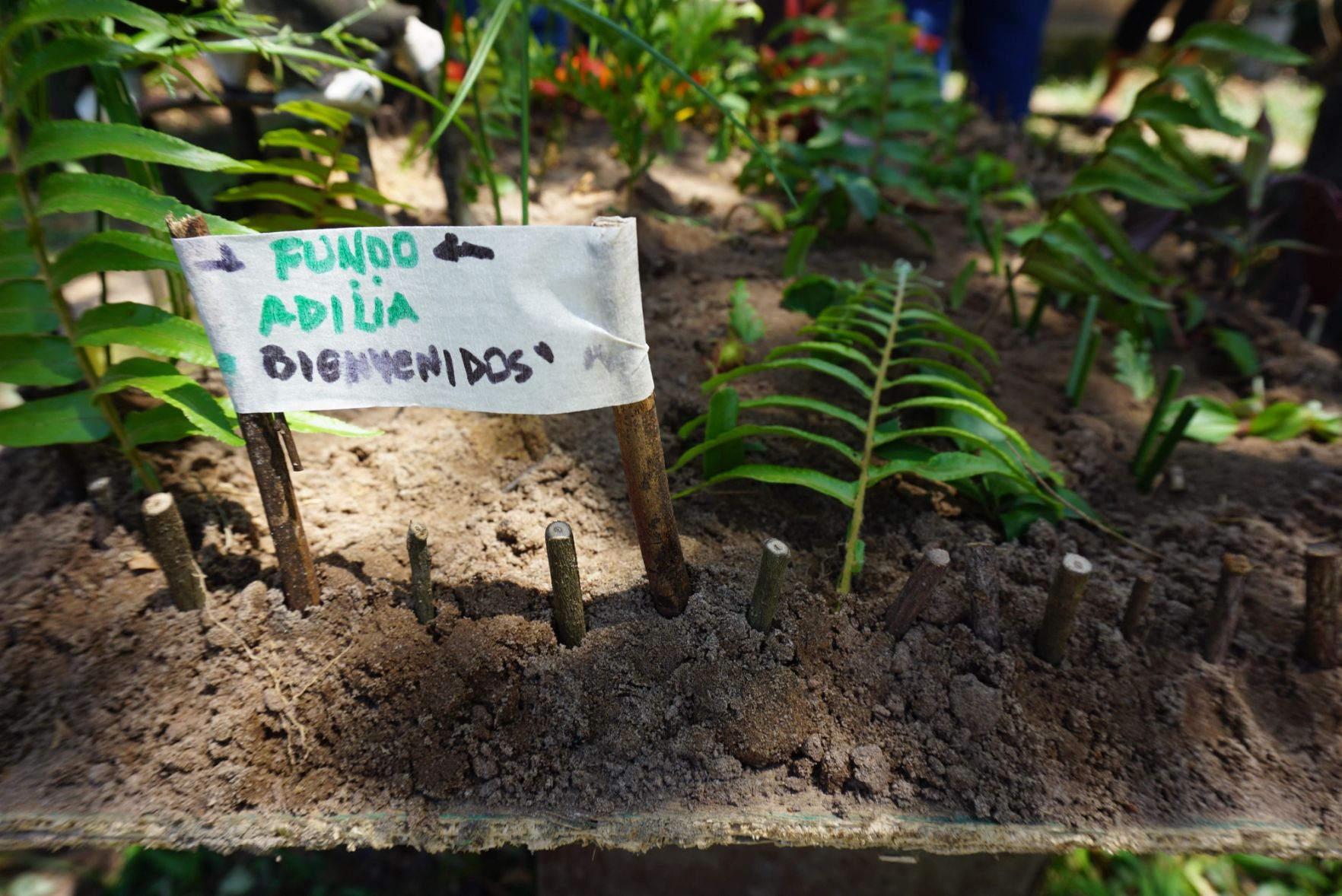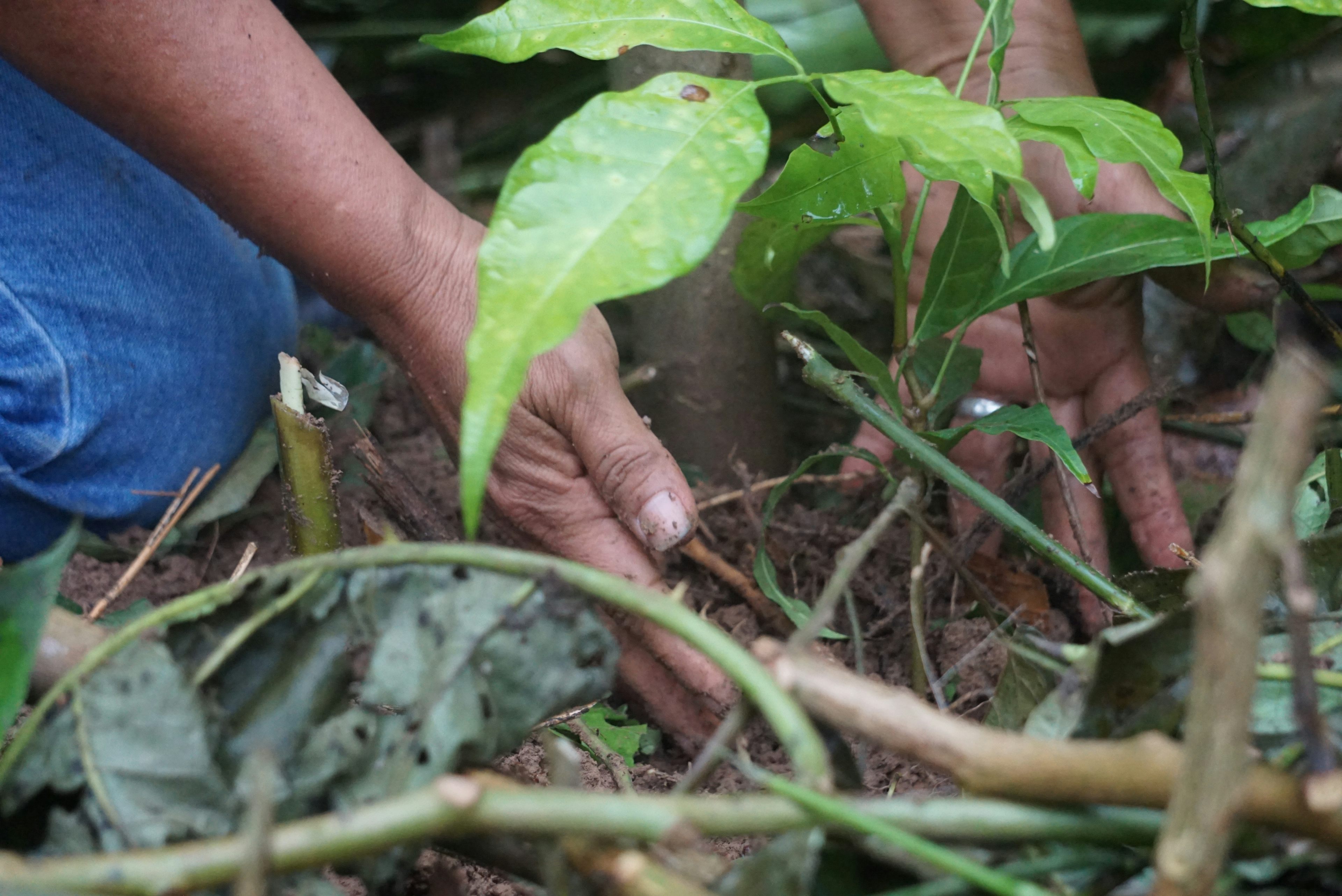Amazonian communities demand viable, culturally relevant, and productive alternatives that not only fit their cultures but also their needs and capacities. For many years now, the Chaikuni Institute has been researching, developing, and promoting regenerative techniques adapted to our local environment, including highly diverse agroforestry systems, forest farming without burning, and regenerative ayahuasca production.
Our comprehensive Amazonian agroforestry system, that we call “chacra integral”, has proven to have an enormous potential. Below we will elaborate on four benefits of the chacra integral and show how it contributes to the the well-being of Amazonian communities and the Amazon region.

1.
The recovery of traditional indigenous knowledge.
Over the course of history, Amazonian indigenous peoples have developed a wide range of effective forest farming practices to meet their essential needs. Sadly, a significant portion of this knowledge is disappearing with the arrival of current models of industrial development. Local traditional knowledge is relegated by notions of "modernity" and "progress."
“Chacras integrales” are inspired by and largely built on ancestral knowledge and sustainable ways of life practiced by indigenous peoples for centuries. Traditionally, Amazonian families obtained a diverse array of resources from their plots, including food, medicines, supplies, materials, and fiber. In a chacra integral, annual food crops, timber trees, fruit trees, and medicinal plants are cultivated within the same plot of land. Different plants are ready to harvest at different times throughout the year, as well as over the years, providing a continuous source of products which enable families to meet a diverse range of needs.
A fundamental aspect of our work with any community or indigenous group is to foster a dialogue between their traditional wisdom and more “modern” or “scientific knowledge”. This process, beside generating an environmentally and culturally sound productive alternative for Amazonian families, is also key to recovering and revalorizing important traditional knowledge systems.

2.
Taking back food sovereignty to Amazonian families.
Food security is important. However, it often fails to address critical considerations that are key in the context of the Amazon. While it emphasizes the significance of ensuring access to food, it tends to overlook factors related to how and where the food is sourced. Consequently, this can lead to subsidies that harm local producers or exacerbate environmentally damaging agricultural practices(1). Given the conditions of the Amazon region, it becomes essential for families to achieve food sovereignty based on their choices and local capabilities.
With agroforestry systems like the chacra integral, the needs of families take center stage, without implying a surrender of the opportunity to increase economic income through surplus sales of specific products. The primary focus is on freedom, autonomy, and empowerment for individuals, families, and communities.
By offering a continuous source of a wide range of products this approach brings resources closer to the community, facilitates better planning of their utilization, and enables management at the family level.
It's essential that agroforestry practices respect each community’s and family´s specific needs, characteristics, and culture. Only by working hand in hand with them, we can contribute to revalue their knowledge and autonomy.

3.
A key measure for climate change mitigation and adaptation.
In the Peruvian Amazon, deforestation is responsible for 51% of greenhouse gas emissions. The clearing and burning of rainforests for livestock and agricultural production results in the release of the vegetation's carbon dioxide into the atmosphere, accelerating global warming.
Within the chacra integral system, we stress that the cleared vegetation should not be burned when preparing the land. Rather, it is left on the ground, mimicking the natural rainforest cycle. The carbon from the cut vegetation integrates into the soil's organic matter, reducing carbon emissions and effectively creating new nutrients for our system.
Since an integral agroforestry plot remains productive for a long time, it lessens the demand for clearing additional land for agriculture, avoiding deforestation, preserving natural forests and their carbon reservoirs. Moreover, agroforestry systems support a wide array of plant and animal species, enhancing biodiversity and ecosystem resilience, which, in turn, bolsters their ability to withstand the impacts of a changing climate.

4.
Protecting intact rainforests and isolated indigenous groups
Large intact patches of rainforest are significant for the vast biodiversity they contain, the carbon they store, climate regulation, as well as for indigenous peoples living in voluntary isolation or initial contact move (PIACIs by its Spanish acronym), with an important intrinsic cultural value. The term PIACI describes peoples who reject contact with anyone outside of their own people. Historically, cases of contact of such groups with “the outside world” have led to their death and great decimation.
Their remote territories are sought-after for being areas with untapped natural resources. They are constantly under threat from activities like logging or mining, either of illegal origin or through concessions granted by the government. By offering a sustainable agricultural and income alternative to Amazonian families, agroforestry can alleviate the pressure on these forests for resources like timber, among others, which may be exploited in an unsustainable manner. Having a secured livelihood, furthermore, motivates the communities that are in the buffer zones of PIACI areas to keep protecting the vast forests and the isolated groups living within them.
In short, non-burning agroforestry systems, through enhanced productivity and diversified production, can provide significant incentives for families and small-scale producers to decrease deforestation and protect large tracts of natural forests, both beneficial to mitigate climate change. It's essential that agroforestry practices respect each community's and family's specific needs, characteristics, and culture. Only by working hand in hand with them can we contribute to revaluing their knowledge and autonomy.
-
At the Chaikuni institute, we are committed to keep working alongside local and indigenous communities in the Peruvian Amazon to promote non-burning agroforestry systems. To support our agroforestry work, click here. Join us in making a positive impact!
.
Reference:


